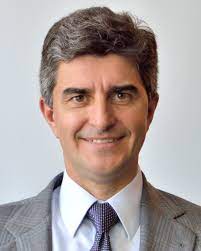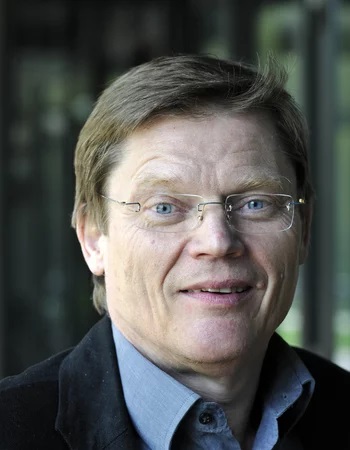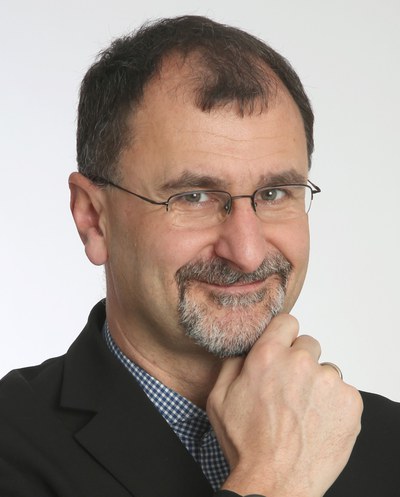Plenary session

The plenary session is scheduled for Wednesday morning, 20th September (Main Hall) and will consist of a series of outstanding talks.
Three speakers have already confirmed their participation:
- Prof. Yury Gogotsi - 2023 Czochralski Award Recipient
- Prof. Joachim Maier, Max Planck Institute for Solid State Research, Stuttgart, Germany
- Prof. Christoph J. Brabec, FAU Erlangen Nürnberg, Department of Materials Science and Engineering, Germany
It's hard to imagine a richer offering of speakers. And that's the point of the plenary session: provide a shared experience for all conference attendees.
Schedule of plenary session:
09:15 - Introduction - Conference Organizers
09:25 - Welcome address by the Rector of the Warsaw University of Technology
09:30 - Welcome Address by E-MRS President
09:35 – Laudation and Presentation of the Jan Czochralski Award to Prof. Yury Gogotsi
09:50 - Czochralski Award laureate - Prof. Yury Gogotsi, A.J. Drexel Nanomaterials Institute and Department of Materials Science and Engineering Drexel University, Philadelphia, PA, 19104, USA
 |
2023 Czochralski Award Recipient
How MXenes Expand and Change the Nanomaterials World Yury Gogotsi A.J. Drexel Nanomaterials Institute and Department of Materials Science and Engineering |
|
|
MXenes (carbides, nitrides, oxycarbides and carbonitrides of early transition metals) are a very large family of 2D materials. They have a chemical formula of Mn+1XnTx, where M is a transition metal (Ti, Mo, Nb, V, Cr, etc.), X is either carbon and/or nitrogen (n=1, 2, 3 or 4), and Tx represents surface terminations (O, OH, halogens, chalcogens). The large variety of structures and compositions, availability of solid solutions on M and X sites, and control of surface terminations offer a plethora of materials to produce and investigate.1 Combining their plasmonic properties with ease in aqueous processing, high electronic conductivity (over 20,000 S/cm), biocompatibility, and excellent mechanical properties, which exceed other solution-processable 2D materials, MXenes have the characteristics enabling numerous applications.2 Inherent to their 2D structure, the charge carriers responsible for MXene’s optical responses and electronic transport are very close to the surface that has exceptional ability to undergo reversible chemical and electrochemical reactions to add or change surface terminations. By design of the MXene composition, the carrier plasma can be rendered sensitive to the resulting changes in band structure and state-filling. As a result, properties of MXenes, such as conductivity, work function, plasmon resonance; visible, IR and microwave absorption/reflection can be controlled by introducing reversible or irreversible changes in their surface chemistry. This allows electrochemical modulation of optical and electronic properties by influencing material interactions with electromagnetic wavesover visible, IR, THz and even GHz wavelength ranges. Many technological advances can be enabled by these chemically responsive, conductive materials. In this talk, I explain how optical, electronic and transport properties of MXenes can be manipulated by tuning their chemical composition. This presentation will also demonstrate electrochemical modulation of the optoelectronic properties and describe potential applications of MXenes in photonic, optoelectronic and electrochemical devices.1,3,4 References:
|
||
10:35 - Joachim Maier, Max Planck Institute for Solid State Research, Physical Chemistry of Solids, Stuttgart, 70569, Germany
 |
Point Defect Chemistry: The Powerful Basis of Energy Materials Research Joachim Maier Max Planck Institute for Solid State Research, Physical Chemistry of Solids, Stuttgart, 70569, Germany
|
|
|
Ionic point defects (vacancies and interstitial ions) are the chemical excitations in solids, and their role is analogous to the role of dissociated centers in water or of electrons and holes in silicon. Point defect chemistry is the area that deals with ionic and electronic charge carriers and their interactions. It is fundamental for understanding transport properties, reactivities and storage capacities in the bulk and at interfaces (nanoionics) [1]. The contribution discusses the relevance of a defect-chemical treatment for electrolytes and electrodes in fuel cells, batteries, supercapacitors and photochemical cells. [1] J. Maier, Physical Chemistry of Ionic Materials ( Ions and Electrons in Solids), Wiley, 2nd ed. (2023) |
||
11:20 - Christoph J. Brabec, Institute of Materials for Electronics & Energy Technology (i-MEET), Department of Materials Science and Engineering, FAU, Erlangen, Germany and Helmholtz-Institute Erlangen-Nürnberg (HI ERN) Forschungszentrum Jülich, Erlangen, Germany
 |
Discovery and Acceleration of Emerging Photovoltaics Christoph J. Brabec 1) Institute of Materials for Electronics & Energy Technology (i-MEET) |
|
|
Keywords: Solar energy, OPV, Perovskites, Materials Genome The development of complex functional solar materials for organic or perovskite photovoltaics poses a multi-objective optimization problem in a large multi-dimensional parameter space. Solving it requires reproducible, user-independent laboratory work and intelligent preselection of experiments. However, experimental materials science is a field where manual routines are still predominant, although other domains like pharmacy or chemistry have introduced robotics, automation and machine learning long before. In this talk, I will present a fused knowledge-based / data-driven approach to utilize MAPs (material acceleration platforms) for autonomous materials and device discovery in the field of emerging photovoltaic technologies. The impact of this methodology for autonomous material and device discovery will be discussed in terms of contributing to overcome fundamental scientific challenges. Biography: Christoph J. Brabec received his PhD (1995) in Physical Chemistry from Linz University, Austria and joined the group of Alan Heeger at UC Santa Barbara (USA) for a sabbatical. He joined the SIEMENS research labs (project leader) in 2001, Konarka in 2004 (CTO), Erlangen University (FAU - Professor for Material Science) in 2009, ZAE Bayern e.V. (scientific director and board member) in 2010, spokesmen of the Interdisciplinary Center for Nanostructured Films (IZNF) in 2013 and became director at FZ Jülich (IEK-11) in 2018. In 2018 he was further appointed as Honorary Professor at the University of Groningen, Netherlands. |
||
Department of Physics and Astronomy viale Berti Pichat 6/2 40127 Bologna Italy
+39 051 2095806beatrice.fraboni@unibo.it
Institute for Materials Science and Max Bergmann Center of Biomaterials, 01062 Dresden, Germany
gianaurelio.cuniberti@tu-dresden.dePolish Academy of Sciences Al. Lotników 32/46 02-668 Warszawa Poland
godlew@ifpan.edu.pl